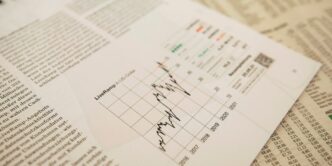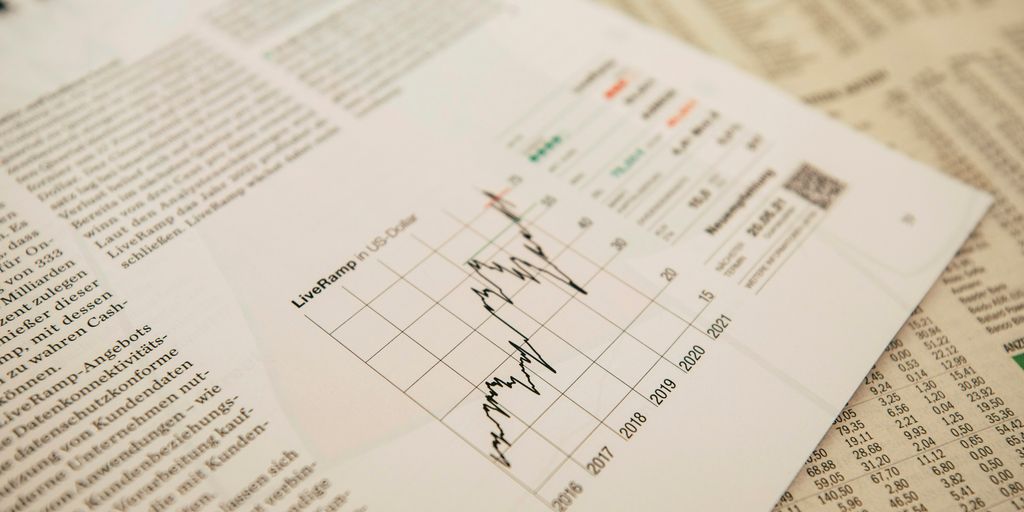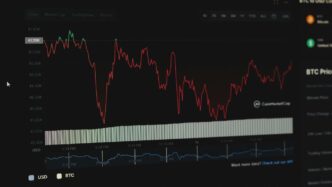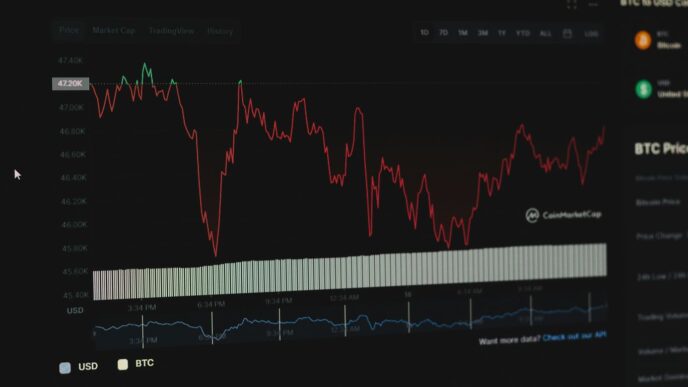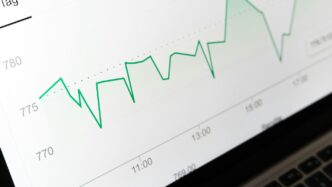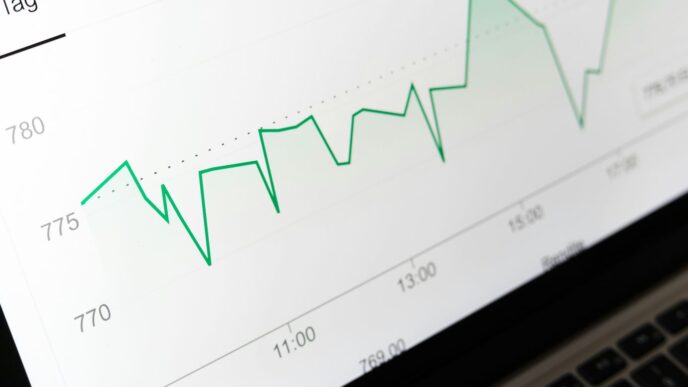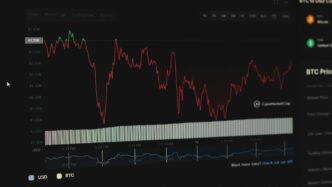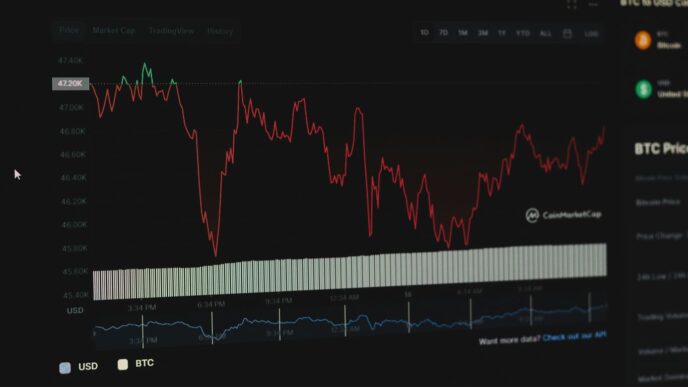Ever wonder how the 5-year yield affects your money? It might seem like a small detail, but this number plays a big role in the financial world. It can influence things from your savings account interest to the value of your investments. We’ll break down what the 5-year yield is, how it’s calculated, and why it matters for your personal finances. Understanding this can help you make smarter choices with your hard-earned cash.
Key Takeaways
- The 5-year yield is basically the return you get on a bond that matures in five years. It’s a key indicator for investors.
- When the 5-year yield goes up, bond prices usually go down, and vice-versa. They have an inverse relationship.
- Things like what the Federal Reserve does and how much inflation there is can really change the 5-year yield.
- This yield impacts your investments, especially fixed income like bonds. It can also ripple into the stock market.
- Comparing the 5-year yield to other bond maturities helps you understand the overall health of the economy and interest rate trends.
Understanding Bond Yields
What Is a Bond Yield?
Okay, so what’s a bond yield anyway? Simply put, it’s the return you get on a bond investment. Think of it as the bond’s version of an interest rate. It tells you how much income you’ll receive relative to the bond’s price. It’s not just about the coupon rate (the stated interest rate on the bond); it’s a more complete picture of what you’re actually earning. For example, bond yields can be affected by the market price of the bond.
Yield Versus Price
Here’s where things get interesting. Bond yields and bond prices have an inverse relationship. When bond prices go up, yields go down, and vice versa. Why? Because the yield is calculated based on the bond’s price. If you buy a bond for less than its face value (a discount), your yield will be higher than the coupon rate. If you buy it for more than its face value (a premium), your yield will be lower. This inverse relationship is key to understanding how bonds work.
To illustrate:
- If a bond’s price increases, its yield decreases.
- If a bond’s price decreases, its yield increases.
- This relationship helps investors assess the attractiveness of a bond.
Bond Yield Calculation Issues
Calculating bond yields can be a bit tricky. There are several different ways to do it, and each one gives you a slightly different number. The most basic calculation is the current yield, which is simply the annual coupon payment divided by the bond’s current price. However, this doesn’t take into account the time value of money or any capital gains or losses you might realize when you sell the bond. For a more accurate picture, you might want to look at the yield to maturity (YTM), which factors in all future cash flows, including the repayment of principal at maturity. But even YTM has its limitations, as it assumes you’ll hold the bond until maturity and reinvest all coupon payments at the same rate. So, while the current yield is a quick snapshot, it’s important to understand its limitations and consider other yield calculations for a more complete analysis.
The Relationship Between 5-Year Yield and Bond Prices
Bond prices are something to keep an eye on. They can tell you a lot about where interest rates are headed and what might happen with the economy. Plus, they’re a big part of having a good mix of investments. Just remember, bond prices and yields can jump around, especially when interest rates are changing. Let’s get into how they relate to each other.
Inverse Relationship Explained
Bond prices and yields move in opposite directions. It’s like a seesaw. When bond prices go up, yields go down, and when yields go up, bond prices go down. This happens because the yield is basically the return you get on a bond relative to its price. If a bond is selling for less than its face value, it’s yielding more because you’re paying less to get the same return. This is important to understand when looking at government bond yields.
Impact of Interest Rate Changes
Interest rate changes are a big deal for bond prices. If interest rates rise, newly issued bonds will offer higher yields to attract investors. To compete, older bonds with lower yields become less attractive, and their prices fall to compensate. Conversely, if interest rates fall, older bonds with higher yields become more valuable, and their prices rise.
Think of it this way:
- Rising Rates: New bonds = higher yields, old bonds = lower prices.
- Falling Rates: New bonds = lower yields, old bonds = higher prices.
- No Change: Prices stay relatively stable (assuming no other market factors change).
Real-World Price Adjustments
Let’s say you bought a 5-year bond with a 3% yield. Now, imagine interest rates jump to 4%. New bonds are issued with that higher yield. Your bond is now less appealing. To sell it, you’d have to lower the price so that the effective yield to the buyer is closer to that 4%. That price drop is a real-world adjustment to keep the bond competitive. The maturity date is also a factor.
Calculating the 5-Year Yield
Formula and Calculation
Okay, so you want to figure out the 5-year yield? It’s not as scary as it sounds. Basically, we’re trying to find the return you’d get if you held a bond for five years. The most straightforward way to approximate this is to look at the yield to maturity (YTM) of a bond that matures in roughly five years.
Let’s say you have a bond with a face value of $1,000, a coupon rate of 5% (meaning it pays $50 per year), and it matures in five years. If the bond is currently trading at $950, the YTM calculation gets a bit complex, but there are plenty of online calculators that can do the heavy lifting. The formula itself is an iterative process, but the idea is to find the discount rate that makes the present value of all future cash flows (coupon payments and face value) equal to the current price.
Accrued Interest Considerations
Here’s where things get a little trickier. When you buy a bond between coupon payment dates, you’ll likely have to pay the seller for the accrued interest – the interest that has accumulated since the last payment. This affects the actual yield you receive. The stated yield (like the YTM) doesn’t always reflect this. You need to factor in the accrued interest to get a more accurate picture of your return. For example, if you buy a bond two months into a six-month coupon period, you’ll owe the seller two months’ worth of interest. This payment effectively lowers your purchase price, which in turn impacts your actual yield.
Bond Equivalent Yield
Bond Equivalent Yield (BEY) is a way to annualize yields on bonds that pay interest semi-annually, making them comparable to investments with annual yields. Since many bonds pay interest twice a year, the stated yield is often half of the annual rate. To calculate the BEY, you simply double the semi-annual yield. For instance, if a bond has a semi-annual yield of 3%, the BEY would be 6%. This bond equivalent yield helps investors compare different bonds, even if they have different payment schedules. It’s a pretty standard way to quote bond yields in the market, so it’s good to know what it means.
Factors Influencing the 5-Year Yield
Federal Reserve Policy
The Federal Reserve’s actions have a big impact. The Fed uses monetary policy to influence interest rates, and these decisions directly affect bond yields. When the Fed raises the federal funds rate, it generally leads to higher yields across the board, including the 5-year yield. Conversely, if the Fed lowers rates, yields tend to fall. It’s all about managing inflation and economic growth. The Fed might also use tools like quantitative easing (QE), which involves buying government bonds or other assets to inject liquidity into the market, pushing yields down. Keep an eye on those Fed announcements!
Inflationary Pressures
Inflation is a major driver of bond yields. If investors expect inflation to rise, they’ll demand higher yields to compensate for the erosion of their purchasing power. Here’s how it usually goes:
- Higher inflation expectations lead to higher nominal yields.
- Bond investors sell existing bonds if they anticipate rising inflation, driving prices down and yields up.
- The market closely watches inflation data, like the Consumer Price Index (CPI) and the Producer Price Index (PPI), to gauge future inflation trends.
Market Expectations
Market sentiment and expectations play a significant role. It’s not just about what’s happening now, but what investors think will happen in the future. If there’s a widespread belief that the economy will strengthen, leading to higher growth and potentially higher inflation, the 5-year yield will likely increase. Conversely, if there are fears of a recession, yields may fall as investors flock to the safety of government bonds. News events, economic data releases, and even geopolitical developments can all influence market expectations and, consequently, the 5-year yield.
How the 5-Year Yield Impacts Your Portfolio

Fixed Income Investments
Okay, so you’re thinking about bonds, right? The 5-year Treasury yield is like a benchmark. It tells you what kind of return you can expect on a relatively safe investment over five years. If the 5-year yield is high, new bonds will offer better returns, which can make existing lower-yielding bonds less attractive. This can affect the price of bonds you already own. If you’re holding bonds in a bond fund or ETF, a rising 5-year yield can cause the value of that fund to dip a bit, at least in the short term. On the flip side, if yields are falling, your bond holdings might actually increase in value. It’s all about that inverse relationship between yield and price.
Equity Market Implications
The stock market isn’t immune to bond yields either. A rising 5-year yield can sometimes signal that interest rates are going up, which can make borrowing money more expensive for companies. This can cut into their profits and potentially slow down economic growth. Investors might then shift some money out of stocks and into bonds, which are now looking more appealing with those higher yields. This can lead to some volatility in the stock market. On the other hand, a low or falling 5-year yield can suggest that interest rates are staying low, which can be good for stocks because it keeps borrowing costs down and encourages investment. It’s a balancing act, really.
Diversification Strategies
This is where things get interesting. The 5-year yield can be a useful tool when you’re thinking about how to spread your investments around. If you think yields are going to rise, you might want to shorten the average maturity of your bond portfolio. This means investing in bonds that will mature sooner, so you can reinvest the money at those higher rates when they become available. Alternatively, if you think yields are going to fall, you might want to lengthen the maturity of your bond portfolio to lock in those higher rates for a longer period. Also, consider how the 5-year yield compares to other asset classes, like stocks or real estate. If bonds are offering a competitive return, it might make sense to allocate a larger portion of your portfolio to fixed income investments to reduce risk. Here’s a few things to keep in mind:
- Rebalance Regularly: Don’t just set it and forget it. Review your portfolio regularly and adjust your asset allocation as needed to stay aligned with your goals and risk tolerance.
- Consider Inflation: Make sure your investments are keeping pace with inflation. A bond yield that’s lower than the inflation rate means you’re actually losing purchasing power.
- Don’t Put All Your Eggs in One Basket: Diversification is key. Spread your investments across different asset classes, sectors, and geographies to reduce risk.
Comparing the 5-Year Yield to Other Maturities
Yield Curve Dynamics
Okay, so the yield curve is basically a snapshot of bond yields across different maturities, from short-term (like 3-month Treasury bills) to long-term (like 30-year bonds). Usually, it slopes upward – meaning longer-term bonds have higher yields than shorter-term ones. This makes sense, right? Investors usually demand more return for locking their money over a longer period. But things get interesting when the curve flattens or even inverts (short-term yields higher than long-term). An inverted yield curve can sometimes signal economic trouble ahead. It’s not a perfect predictor, but it’s something economists watch closely.
Short-Term Versus Long-Term Yields
The 5-year yield sits in the middle of the curve, so it’s influenced by both short-term and long-term factors. Short-term yields are heavily influenced by what the Federal Reserve does with interest rates. If the Fed raises rates, short-term yields tend to jump up pretty quickly. Long-term yields are more about expectations for future economic growth and inflation. If investors think the economy is going to boom and inflation will rise, long-term yields will likely go up, too. The 5-year yield kind of balances these two forces. It’s not as sensitive to Fed moves as, say, the 2-year yield, but it’s also not as driven by long-term growth expectations as the 30-year yield.
Historical Yield Spreads
Looking at the historical difference between the 5-year yield and other maturities can give you some perspective. For example, what’s the typical spread between the 5-year and the 10-year Treasury yield? If the spread is wider than usual, it might mean the market expects something to change – maybe faster economic growth, or maybe higher inflation. If the spread is narrower than usual, it could mean the opposite. Here’s a simplified example:
| Maturity | Average Yield (2015-2025) | Current Yield (7/3/2025) | Spread vs. 5-Year (Current) |
|---|---|---|---|
| 2-Year | 2.0% | 2.2% | -0.3% |
| 5-Year | 2.5% | 2.5% | 0.0% |
| 10-Year | 2.8% | 2.7% | 0.2% |
| 30-Year | 3.0% | 2.9% | 0.4% |
These spreads are constantly changing, so it’s a good idea to keep an eye on them. They can give you clues about market sentiment and where interest rates might be headed. Plus, understanding these relationships can help you make smarter decisions about your bond investments.
## Wrapping It Up: Your Investments and the 5-Year Yield
So, we’ve talked a lot about the 5-year yield and what it means. It’s not just some number on a screen; it actually tells us a lot about how the economy is doing and where things might be headed. Keeping an eye on this yield can help you make smarter choices with your money, whether you’re thinking about buying bonds, looking at stocks, or just trying to figure out what’s next. It’s all about staying informed and understanding the bigger picture. This way, you can adjust your plans and feel more in control of your financial future. It’s pretty cool how one number can give you so much insight, right?
Frequently Asked Questions
What exactly is a bond yield?
A bond yield tells you the return you can expect to get from a bond. Think of it like the interest rate you earn on a savings account, but for a bond. It’s a key number for figuring out how good of an investment a bond is.
How does the 5-year yield affect the price of bonds?
When interest rates in the market go up, older bonds that pay lower interest become less attractive. So, their price drops to make their yield (the return you get) competitive with new bonds. If market rates go down, older bonds with higher interest payments become more appealing, and their price goes up. It’s like a seesaw: one goes up, the other goes down.
How is the 5-year yield figured out?
The 5-year yield is basically the interest rate you get on a bond that will be paid back in five years. It’s not just a simple calculation because things like how much you paid for the bond, how much interest it pays, and how much time is left until it matures all play a part. It’s a bit more involved than just dividing the interest by the price.
What makes the 5-year yield go up or down?
Several big things can change the 5-year yield. The Federal Reserve’s decisions on interest rates are a huge one. If they raise rates, the 5-year yield usually goes up. Also, if prices for everyday goods are rising (inflation), investors will want a higher yield to make sure their money keeps its buying power. And what people expect to happen in the economy also plays a role.
How does the 5-year yield impact my investment portfolio?
The 5-year yield can really shake up your investments. For bonds, a higher yield means new bonds are paying more, but your older bonds might lose value. For stocks, a higher yield can make bonds look more attractive than stocks, which might cause stock prices to dip. It’s important to spread your money around different types of investments to protect yourself.
Why compare the 5-year yield to other bond yields?
The yield curve is a picture of how different bond maturities (like 1-year, 5-year, 10-year bonds) are yielding. Usually, longer-term bonds pay more interest because you’re tying up your money for longer. But sometimes, short-term yields can be higher than long-term ones, which can signal trouble for the economy. Comparing the 5-year yield to others helps us understand what’s happening in the market.

